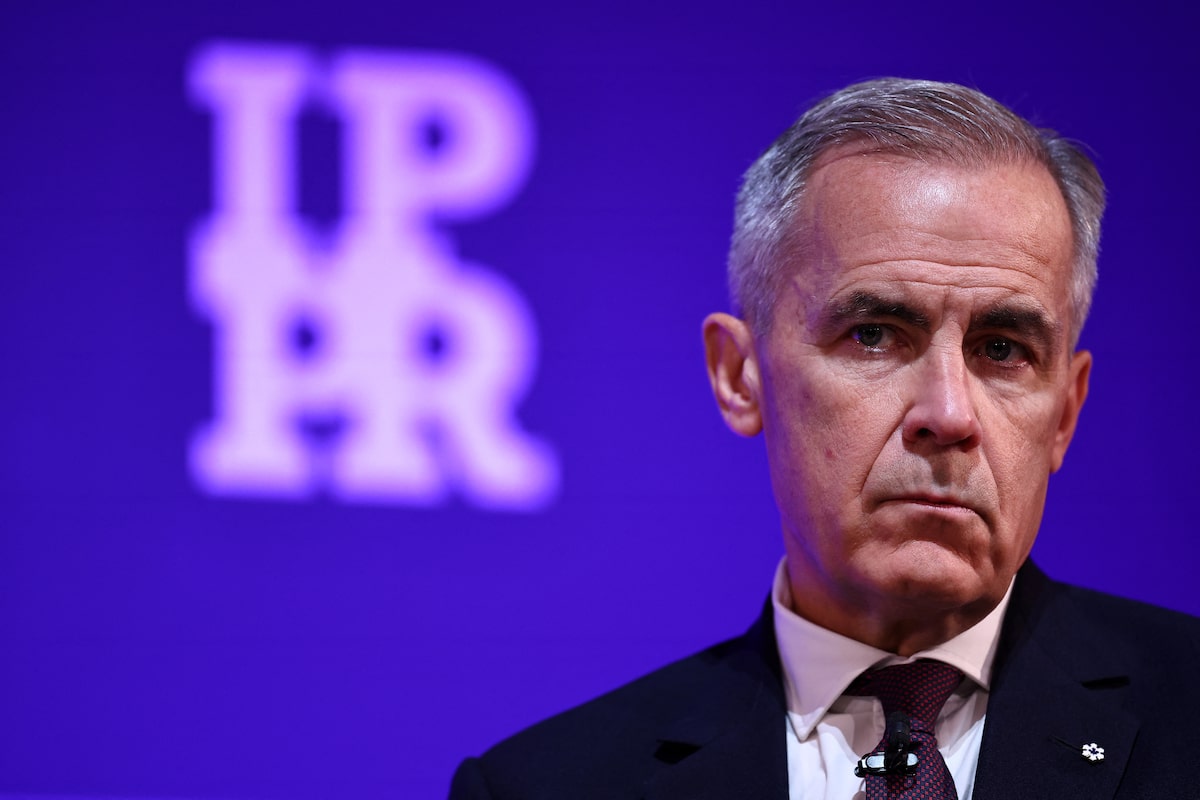Prime Minister Mark Carney at the 2025 Global Progress Action Summit in London on Friday.HENRY NICHOLLS/AFP/Getty Images
Jessica Kelly is a senior policy adviser at the International Institute for Sustainable Development.
Ten years ago, on Brexit’s eve, then Bank of England governor Mark Carney told a crowd gathered at Lloyd’s of London that climate change posed an existential threat to the global financial system. He called it a “tragedy of the horizon,” rooted in the financial sector’s failure to bring long-term climate risk assessments into decision-making, imposing a cost on future generations that can’t be reversed.
Today, another economic sea change is underway, this time due to an aggressive wave of tariffs rolled out by the Trump administration, and it’s roiling global markets. As Canada’s Prime Minister, Mr. Carney at last has an opportunity to deliver on the calls to action he outlined in 2015, particularly that more be done to develop consistent, comparable, reliable and clear disclosure around the carbon intensity of different assets.
Extreme weather is forcing investors to rethink how to manage physical climate risks
Analysis: China, the world’s worst polluter, is becoming an unlikely climate leader
At the core of Mr. Carney’s proposal was a simple concept: Develop reliable methods for investment firms to disclose climate-related risk. This means identifying how any asset might be more or less risky to invest in on account of the changing climate, as well as how the investment itself might contribute to climate change. His belief was that, with this information, investors can effectively “back their convictions with capital” and accelerate the transition away from unsustainable business activities.
Like many financial regulators at the time, he remained skeptical of accomplishing this by requiring banks to include legislated climate commitments in their mandates. He preferred to keep regulators out of the climate fight and in their lane of financial expertise, arguing “it is not for a central banker to advocate for one policy response over another. That is for governments to decide.”
Right now, Mr. Carney’s government must decide whether it is ready to take climate-related risk disclosure more seriously. We already know that voluntary disclosure on its own does not deliver the shift in capital flows so urgently needed, just as voluntary climate finance commitments such as the Net-Zero Banking Alliance will not endure shifting political trends.
Investor convictions, as it turns out, aren’t often in the best interests of the planet – at least not in the long run. And that is the root of the tragedy: Profits trump values.
The solution is twofold: Measure the risk with compulsory climate-related disclosures and, crucially, mitigate the risk itself. This means mandating financial entities to develop transition plans, moving capital away from fossil fuel-related risk and toward decarbonization. (This is not just a climate imperative; it is an economic one.)
In 2024, insured damage caused by severe weather events reached a new record in Canada, surpassing $8-billion. That same year, global fossil-fuel financing jumped 23 per cent, much of it for expansion that comes with additional risk: Up to 66 per cent of future capital investments in Canadian oil and gas may never pay off, according to IISD research.
Many of Canada’s peer countries, such as Britain and Australia, are legislating broad climate-related risk disclosures, transition-plan reporting and more rigorous stress testing for the long-term stability of their financial systems. Canada is trailing behind, only recently readying for these disclosures and offering voluntary investment guidelines – known as taxonomy – that are still awaiting implementation. The guidelines would define which investments are “green” and “transition.” The nation’s securities regulators are stalling work on mandatory disclosure rules.
Despite the slowdown, the Liberal Party’s 2025 platform and the Canadian Net-Zero Emissions Accountability Act’s 2023 Emissions Reduction Plan have at least committed to broad coverage of climate risk disclosure and net-zero transition plans for federally regulated companies in Canada. The mandate to move forward on these commitments is clear.
To keep the momentum going, the federal government should ensure it delivers on another platform commitment by implementing its investment taxonomy within a year, guided by climate experts. Excluding fossil fuel development from taxonomy labels, as Australia did, will bring confidence, credibility and clarity to the green and transition investment categories. These investment guidelines will help companies navigate their own transition planning.
Canada is known for its strong, stable financial system. If we are to uphold this, it’s critical that we confront our economic exposure to climate risk and lead a transition to greener investments. Canada, along with provincial regulators, must use stronger tools to move the needle. A comprehensive financial legislation such as the mooted Climate-Aligned Finance Act (Bill S-243) would be a good start.
Climate risks must be hard-wired into today’s investments through mandatory disclosures and transition plans if we are to have any hope of protecting Canada’s economy and our future. This will ensure the climate tragedies on the horizon can be weathered. As Mr. Carney said 10 years ago, “The more we invest with foresight, the less we will regret in hindsight.”
